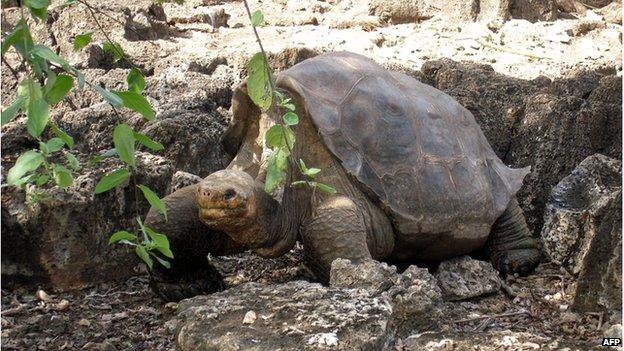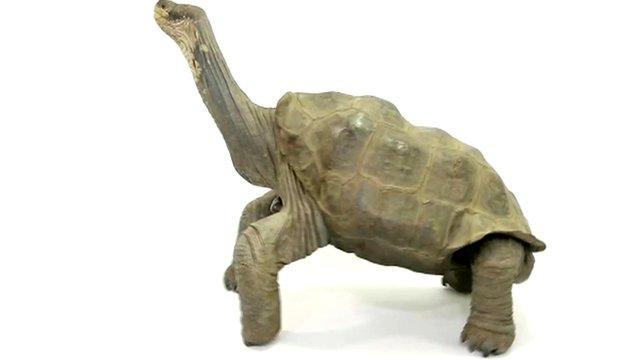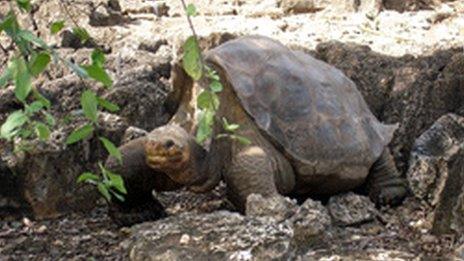Galapagos tortoise Lonesome George: Dispute over body
- Published
Assistant curator Christopher Raxworthy explains the importance of conserving Lonesome George - Clip courtesy American Museum of Natural History
A dispute has broken out between an Ecuadorean ministry and the Galapagos Islands over where the preserved body of a Galapagos giant tortoise should be housed.
Lonesome George rose to fame as the last known individual of his species, but he died in 2012.
The Ecuadorean government wants him to be shown in the capital Quito.
But the Galapagos local mayor says Lonesome George was a symbol of the islands and should return home.
Leopoldo Bucheli said he should return to the breeding centre in the National Galapagos Park in Santa Cruz, where George spent the last 40 years of his life after a Hungarian scientist spotted him on Pinta Island in 1971. The discovery surprised researchers who thought Pinta Island tortoises were already extinct.

In July 2008 after 36 years of attempts at getting him to breed, researchers of the Galapagos National Park had their hopes raised when they found a nest with nine eggs laid by a tortoise that shared the yard with Lonesome
In a statement, the Ecuadorean Environment Ministry said a bronze statue of Lonesome George would be placed in the National Park in Galapagos instead and an education centre constructed for visitors.
George was, the ministry said, part of Ecuador's national heritage and his body needed to be exhibited in Quito where he could be seen by the maximum amount of visitors and where the exhibit could be kept in suitable conditions to maintain its preservation for many years.
Lonesome George is currently on show until 4 January 2015 at the American Museum of Natural History in New York. , external
.lonesomegeorge_alizonllerena(cdf).jpg)
Lonesome George was discovered in 1971, when a Hungarian scientist spotted him on Pinta Island
The author of the 2006 book Lonesome George, Henry Nicholls, said: "Like it or not, George became a poster boy for the Galapagos and for endangered species everywhere.
"He may not have been aware of his talents, but he was able to communicate the conservation message far more powerfully, with more dignity than most humans.
"He should go where he can do the most good."
Lonesome George was the last documented member of Chelonoidis abingdoni.
He was thought to be more than 100 years old when he died.
.unpacking_df_130607_9397.jpg)
Museum scientists at the American Museum of Natural History in New York worked closely with taxidermy experts to preserve Lonesome George. He arrived frozen from the Galapagos Islands.
He lived on a diet of cactus, shrubs, grasses, and broad-leaved plants and was named after a famous 1950s American TV comedian, George Gobel, who called himself Lonesome George.
He weighed about 165 lbs (75kg); male Galapagos tortoises can exceed 660 lbs (300kg) and are the largest living tortoises.
Related topics
- Published23 September 2014

- Published24 June 2012
